Cass appeared calm, even slightly distracted. Tchicaya wondered if she’d taken in his words, if he should repeat himself from the beginning.
"I want to go swimming," she said suddenly.
"Swimming?"
Cass nodded earnestly.
"All right."
Tchicaya began to gesture at the scape, but she grabbed his arm. "In real water," she insisted fiercely. "Real molecules of water."
Tchicaya unclenched her grip on him, and held her by the shoulders. "Okay. As soon as we get out, you can do that."
"I swim in real water; that’s who I am." Her face contorted, and she emitted a long, anguished moan. " I didn’t want to be changed this much !"
"I’ll help you," he promised. "I’ll get you out of here."
On her last day in Museum City, Cass steered the Sarumpaet unescorted through the corridors and tunnels, searching for something. "I asked Hintikka, and she made some inspired guesses, but we never got around to investigating all the possibilities. The Colonists don’t really understand graphs, but they have a system for describing vendeks that maps quite well on to our picture, if you know how to make allowances for the parts that don’t match up."
They veered from wall to wall, scrutinizing various living gadgets: lamps, air conditioners, fragrance dispensers, parasprite telephones, humor replenishers — Mariama’s name for the sacs full of endogenous vendeks that the Colonists imbibed to keep themselves in peak condition.
They probed the gadgets, and the toolkit did its best to infer the fine structure of the vendeks they contained. Tchicaya had no idea what Cass was hunting for. She had bidden farewell to the Colonists earlier, formally handing her diplomatic role on to Mariama. He didn’t know how well that notion translated, but Mariama had begun conversing with the xennobes for herself weeks before, and she seemed satisfied that her newcomer status would not be a handicap. Her own new ship had been prepared; she’d named it in honor of Tarek, in spite of the fact that he was still very much alive. But as she’d pointed out, there were only so many dead people.
"Not quite," Cass muttered. She pulled the ship away from something whose most polite anthropomorphic equivalent was probably a spittoon.
Mariama glanced at Tchicaya inquiringly.
He said, "Don’t ask me. We’ll know when we find it."
The tar pit had stabilized, and the toolkit’s models suggested that the Planck worms would have drowned in its depths. Other, grimmer scenarios could not be ruled out entirely, but as the Sarumpaet made its way back to the border it would seal the tar pit behind it; even if the ship was lost, they would not be opening up an easy channel for the Planck worms.
The worms would certainly have destroyed the interface across the border, but he and Cass would build their own, as close as possible to the old one; it shouldn’t be hard to catch the attention of the equipment on the Left Hand.
From there, they would transmit themselves to Pfaff. It was on the route to Earth, and Tchicaya would accompany her at least that much of the way.
Cass said, "Here it is."
Tchicaya looked up at the toolkit’s display, a schematic of a graph, drawn node by node and edge by edge, superimposed over the larger scape portraying their busy surroundings.
It took him a moment to spot what she meant. Between two vendeks that resembled ornate ironwork, there was a plain, narrow, highly symmetrical layer.
It was the Diamond Graph. The state from which the whole near-side universe was believed to have arisen. Stable here, in this tiny sliver, cushioned between the right two vendeks.
The seed for a universe, lying in the gutter.
Cass gestured at the scape and summoned the image closer, placing it before them on the observation deck.
"That’s what I went looking for," she said. "A glimpse of that . Only I never expected I’d come this close. And I never thought there’d be so much else attached." She smiled uncertainly, then pushed the graph away.
"I think I’m ready to go home."
Quantum Graph Theory is fictitious, but the spin networks on which Sarumpaet’s work is based are part of a real theory, known as loop quantum gravity, discovered by Lee Smolin and Carlo Rovelli. There is a considerable literature on this subject; two comprehensive review papers are:
"An Introduction to Spin Foam Models of Quantum Gravity and BF Theory" by John C. Baez, in Geometry and Quantum Physics , edited by Helmut Gausterer and Harald Grosse, Springer, Berlin, 2000.
and
"The Future of Spin Networks" by Lee Smolin, in The Geometric Universe , edited by S. A. Huggett et al. , Oxford University Press, Oxford, 1998.
I’m indebted to John Baez, who very kindly explained several points to me directly, as well as posting numerous articles on the news group sci.physics.research making these ideas more accessible to nonspecialists. Of course, any errors I’ve committed in describing the real theory, and any absurdities in the way I’ve imagined its future, are my fault entirely.
Decoherence is a real phenomenon, and it is widely accepted as playing a major role in the absence of detectable quantum effects in macroscopic objects. Its role in relation to the superselection rules that forbid superpositions of certain kinds of quantum states is more controversial. These ideas are discussed in:
Decoherence and the Appearance of a Classical World in Quantum Theory by D. Giulini, E. Joos, C. Kiefer, J. Kupsch, I.-O. Stamatescu, and H. D. Zeh, Springer, Berlin, 1996.
I learned about the construction known as Schild’s ladder from:
Gravitation by C. W. Misner, K. S. Thorne and J. A. Wheeler, W. H. Freemann, New York, 1970.
who cite an unpublished lecture by Alfred Schild on January 19, 1970, at Princeton University.
Supplementary material for this novel can be found at
Greg Egan is the author of several acclaimed SF novels and short stories. A winner of the Hugo Award and the John W. Campbell Memorial Award, he was voted the "Most Popular Science Fiction Author of the Decade" (1990s) by Interzone magazine. Mr. Egan lives in Australia.
www.netspace.net.au/~gregegan
Don’t miss the next book by your favorite author. Sign up nowfor AuthorTracker by visiting www.AuthorTracker.com.
Quarantine
Permutation City
Axiomatic
Distress
Diaspora
Teranesia
Cover design by Ervin Serrano
Cover illustration by John Lewis
This is a work of fiction. Names, characters, places, and incidents are products of the author’s imagination or are used fictitiously and are not to be construed as real. Any resemblance to actual events, locales, organizations, or persons, living or dead, is entirely coincidental.
SCHILD’S LADDER.
Copyright © 2002 by Greg Egan. All rights reserved under International and Pan-American Copyright Conventions. By payment of the required fees, you have been granted the non-exclusive, non-transferable right to access and read the text of this e-book on-screen. No part of this text may be reproduced, transmitted, down-loaded, decompiled, reverse engineered, or stored in or introduced into any information storage and retrieval system, in any form or by any means, whether electronic or mechanical, now known or hereinafter invented, without the express written permission of PerfectBound™.
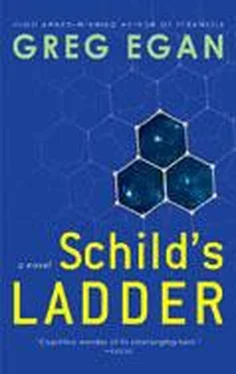
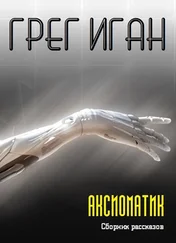

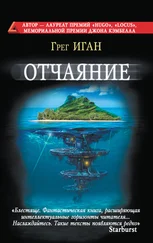
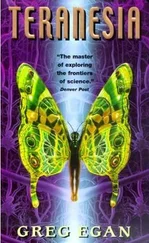
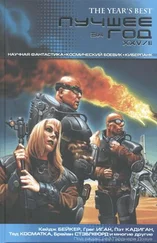
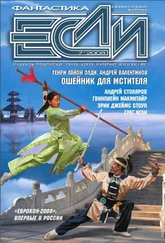

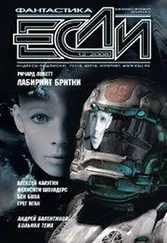
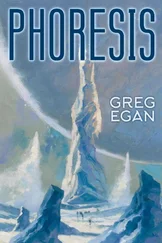
![Грег Иган - Рассказы [компиляция]](/books/419837/greg-igan-rasskazy-kompilyaciya-thumb.webp)
